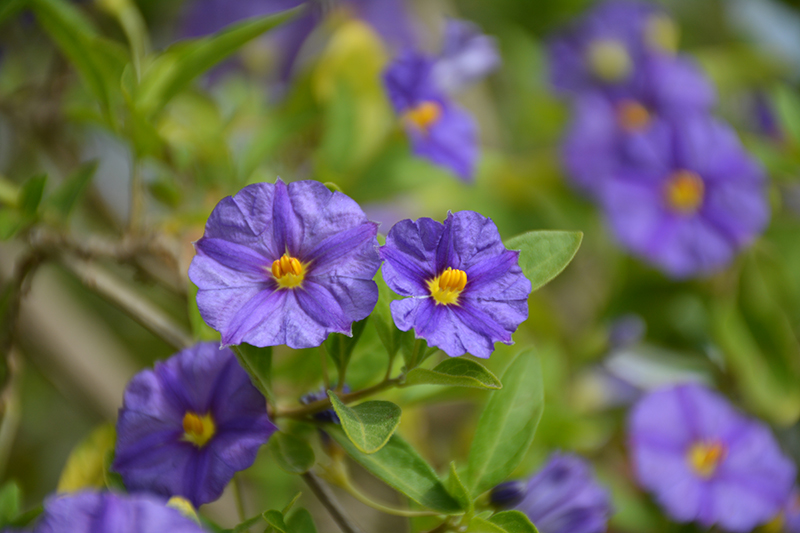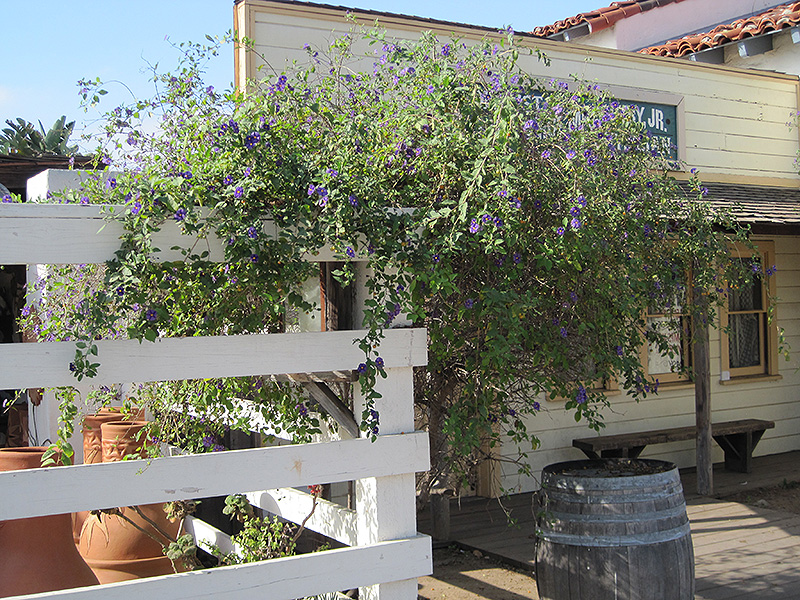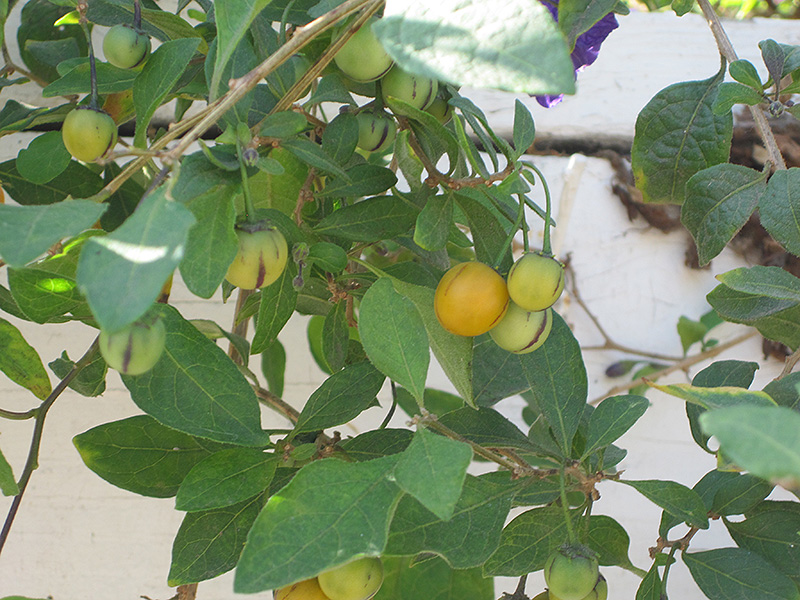Height: 10 feet
Spread: 10 feet
Sunlight:
![]()
Hardiness Zone: 9a
Other Names: Paraguay Nightshade, syn. Solanum rantonnetii
Description:
An exceptional shrub offering intense violet-blue flowers with bright yellow centers from spring until fall; can be grown free standing or trained on fences or trellises; also great in containers; fall berries are poisonous
Ornamental Features
Blue Potato Bush is bathed in stunning lightly-scented blue round flowers with violet overtones and yellow eyes at the ends of the branches from mid spring to mid fall. It has green evergreen foliage. The fuzzy oval leaves remain green throughout the winter.
Landscape Attributes
Blue Potato Bush is a multi-stemmed evergreen shrub with a shapely form and gracefully arching branches. Its average texture blends into the landscape, but can be balanced by one or two finer or coarser trees or shrubs for an effective composition.
This is a high maintenance shrub that will require regular care and upkeep, and should only be pruned after flowering to avoid removing any of the current season's flowers. It has no significant negative characteristics.
Blue Potato Bush is recommended for the following landscape applications;
- Accent
- Hedges/Screening
- General Garden Use
Planting & Growing
Blue Potato Bush will grow to be about 10 feet tall at maturity, with a spread of 10 feet. It has a low canopy with a typical clearance of 1 foot from the ground, and is suitable for planting under power lines. It grows at a medium rate, and under ideal conditions can be expected to live for approximately 20 years.
This shrub should only be grown in full sunlight. It prefers to grow in average to moist conditions, and shouldn't be allowed to dry out. It may require supplemental watering during periods of drought or extended heat. It is not particular as to soil type or pH. It is somewhat tolerant of urban pollution. Consider applying a thick mulch around the root zone in winter to protect it in exposed locations or colder microclimates. This species is not originally from North America, and parts of it are known to be toxic to humans and animals, so care should be exercised in planting it around children and pets. It can be propagated by cuttings.




